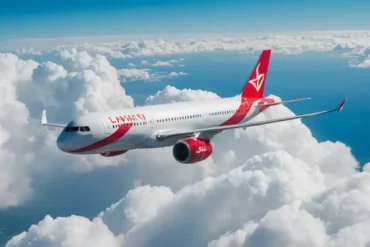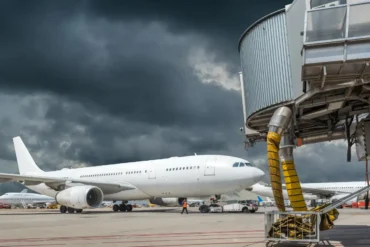Have you ever gazed up at the sky and marveled at those white streaks left behind by planes? It’s captivating to watch as these expansive wisps form, resembling giant spiderwebs where various air currents intersect.
Today, we’re going to explore the world of contrails, or condensation trails—those ‘mysterious’ white streaks that planes leave in their wake. Curious about this phenomenon? Let’s dive in and unravel the science behind it!
What Are Those White Trails Made Of?
Despite the numerous conspiracy theories surrounding this phenomenon, the truth is refreshingly simple: contrails are primarily composed of water vapor. Yes, it’s as straightforward as that. But let’s delve a bit deeper to understand the process.
It’s essential to grasp that clouds form when a body of air reaches its condensation point—that is, when its humidity level hits 100%. Temperature plays a crucial role in this process: lower temperatures make it easier for air to reach its condensation threshold. For example, at sea level, an air mass at 75% humidity and 15°C won’t condense. However, if you lower the temperature to 5°C, condensation occurs. Now, consider that commercial airplanes typically fly in the upper layers of the troposphere, where temperatures can plummet to around -56°C, and the connection becomes clear.
Another vital factor contributing to contrail formation is the way turbine engines operate. Similar to cars, planes use combustion engines that generate thrust by burning fuel with oxygen. This combustion process produces various gases, including water vapor. When combined with the frigid temperatures at high altitudes, these gases coalesce to create those expansive water vapor trails we call contrails.
And why do we call them contrails? In English, the term ‘contrail’ is a blend of ‘condensation’ and ‘trail.’ In Spanish, this anglicism has been adopted due to its simplicity and brevity, although the precise term is ‘estelas de condensación.’
Not All Planes Produce Contrails
You might have noticed that sometimes two planes flying at the same height don’t both leave contrails. Why is this? The answer lies in engine efficiency. The efficiency (η) of a turbojet is measured by the ratio of work output to chemical energy produced. In simpler terms, the more efficient the engine, the lower the altitude at which contrails begin to form.
In today’s aviation landscape, the most efficient engines are in use, which means the most advanced planes can create contrails at progressively lower altitudes. However, because older aircraft are still in operation, you might observe two planes at identical altitudes exhibiting different contrail formation patterns.
What About ‘Chemtrails’?
The term “chemtrails” originates from a misguided belief that contrails are actually chemical trails dispersed by planes for secret, nefarious purposes hidden from public knowledge. This term combines “chemical” and “trail,” giving rise to various unfounded theories about their contents and intentions.
Some individuals speculate that these trails contain substances for population mind control or weather manipulation, while others suggest they carry covert espionage messages. However, reality stands in stark contrast to these notions. The scientific community consistently affirms that contrails are solely composed of water vapor produced through engine combustion, with no hidden chemical additives.
Color Trails: A Different Story

You might be wondering about those colorful trails you’ve seen during air shows. It’s important to note that these are not contrails. These aerial displays typically occur at lower altitudes for better visibility, often during favorable summer weather conditions, so the vibrant displays are distinct from traditional contrails.
The colorful exhibitions in acrobatic air shows are carefully choreographed by pilots to complement their maneuvers. These eye-catching trails are created by deliberately mixing dyes, adding a unique and captivating element to these events. While they may look similar to contrails from a distance, they serve a completely different purpose and are produced through a distinct process.


















